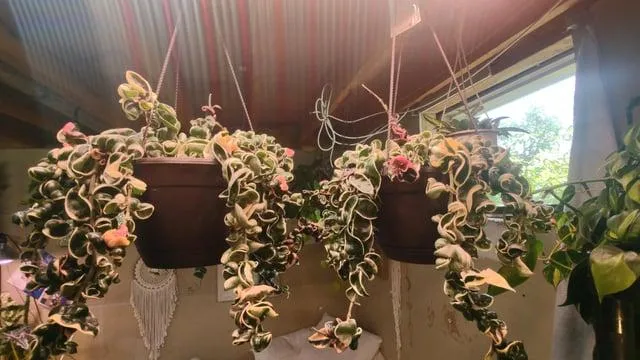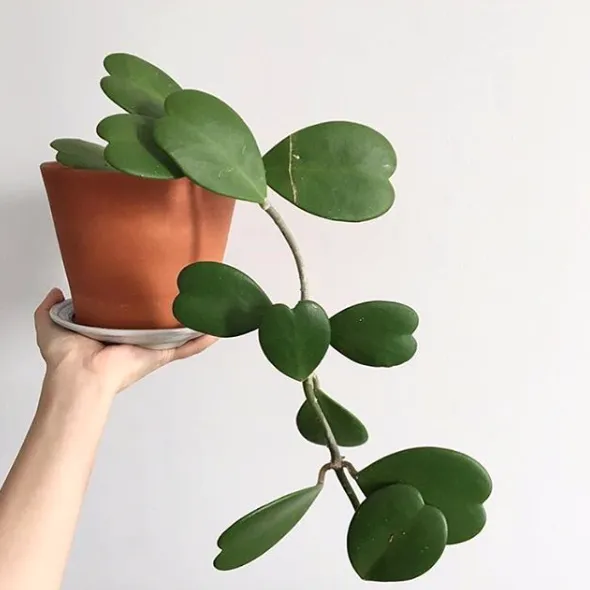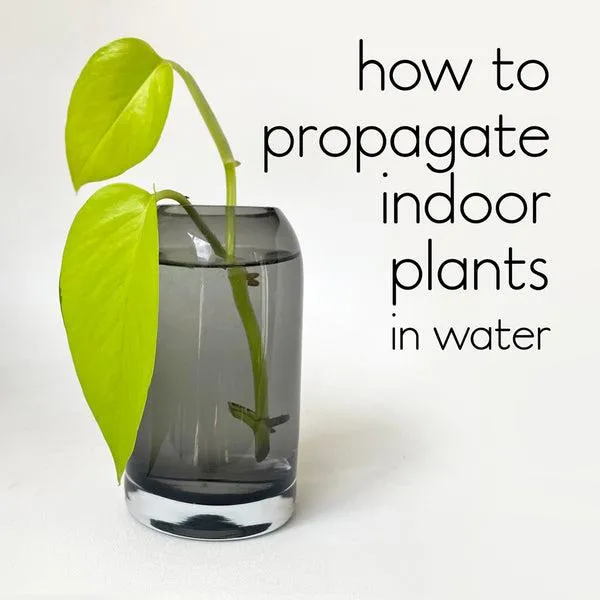Hoya Plants: Are They Safe For Cats?
Cats and houseplants can make for an interesting combination. Many pet owners enjoy decorating their homes with greenery but wonder if certain plants pose risks to their furry friends. One plant type commonly used in home decor is the hoya, known for its waxy, heart-shaped leaves and clusters of colorful flowers. As a hoya enthusiast and long-time cat guardian, I’ve learned a lot about whether these plants are safe or hazardous for cats through both research and experience. In this article, I’ll address some common questions owners have when considering hoya plants and cats.
Are Hoya Plants Toxic to Cats?
The good news is that hoya plants themselves are generally not toxic to cats. According to the ASPCA Animal Poison Control Center, hoya is listed as non-toxic. However, some varieties may cause minor stomach upset if large quantities are ingested. The main concern with hoya plants and other greenery is mechanical injury rather than chemical toxicity. If eaten, sharp spines, thorns or hard parts could potentially damage a cat’s mouth or digestive tract.
Do Cats Eat Hoya Plants?
In most cases, cats will not show much interest in eating hoya plants. Their waxy, leathery leaves are not particularly appetizing compared to more succulent houseplants or catnip. However, there is always the chance of a curious cat nibbling or biting a leaf. Cats may also be attracted to chew or scratch hoya plants simply because their owners spend so much time caring for them. It’s important to examine each cat’s individual personality and tendencies.
Signs of Hoya Ingestion in Cats
If a cat does manage to eat part of a hoya plant, look out for the following signs:
- Vomiting
- Diarrhea
- Lack of appetite
- Rubbing of the mouth or paw at the face
- Drooling
These are general symptoms of plant ingestion and potential stomach or intestine upset. Contact your vet right away if any concerning symptoms appear. However, from my experience, cats usually avoid eating hoya and minor nibbles don’t often lead to issues.

Where to Place Hoya Plants Around Cats
To help deter cats from accessing hoya plants, I’ve found the following tips useful based on what I’ve learned:
- Place hoya up high, out of chewing/scratching reach on shelves, hanging pots or wall mounts.
- Use sturdy pots with no drainage holes on bottom for safety if used as tabletop plants. Heavy, stable pots are less likely to be knocked over.
- Keep hoya separate from cat activity centers like food/water bowls or litter boxes.
- Consider placing hoya in a room the cat has limited access to, like an office instead of living room.
Monitoring pets closely, especially when first introducing any new plant, is wise to catch signs of interest or misbehavior early on.
Other Hoya Varieties and Cat Safety
While most hoya varieties do not pose high toxicity risks to felines, there are a few exceptions to be aware of:
- Hoya carnosa compacta – This cultivar contains insoluble calcium oxalate crystals that could irritate a cat’s mouth or digestive tract if eaten in large amounts.
- Hoya bella – Listed by the ASPCA as “potentially toxic” with reported cases of vomiting in cats. Best avoided or placed somewhere completely inaccessible.
- Any hoya with spines or thorns – Varieties with these features could injure soft tissues like tongue or intestine lining if chewed.
When in doubt, err on the side of keeping questionable hoya varieties far out of a curious cat’s reach.
Tips for Discouraging Cat Interest in Hoya
Some additional steps that could help reduce attraction include:

- Trimming away any colorful blooms for safety, as flower clusters could appeal to cats’ hunting instincts.
- Pruning prickly or sharp leaves and saplings regularly to remove temptation.
- Providing alternate acceptable plants like catnip or cat-friendly succulents to chew on instead.
- Using household distractions like interactive catnip toys when nearby to redirect attention.
Depending on the individual cat, some may still display interest in hoya no matter your precautions. Always supervise plants until confident the cat will leave them alone.
In summary, most hoya varieties appear harmless to cats when ingested in small amounts. But some cultivars could potentially cause minor digestive upset. The physical traits of certain hoyas like thorns may also pose potential injury risks if chewed or scratched. Placement up high, away from activity areas combined with sufficient alternative enrichment tend to minimize interest from my experience. But monitoring is key, as each cat and situation differs. With thoughtful safeguards, many owners find hoya to make lovely accent plants alongside their furry companions. Just use good judgement based on your pet’s unique behaviors. But as always, it’s best to speak with your vet if signs of illness arise after potential exposure. I hope these insights help provide some guidance on keeping both hoya plants and curious cats healthy and happy at home!
Hoya and Cats Information
| Hoya Variety | Care Requirements | Compatibility with Cats |
|---|---|---|
| Hoya Carnosa | Low light, infrequent watering | Generally safe but keep out of reach as some cats may nibble leaves |
| Hoya Kerrii | Bright indirect light, allow soil to dry between waterings | Safe for cats as leaves are thick and waxy |
| Hoya Australis Lisa | Medium light, keep soil moist | Tolerant for cats but pet-proof just in case |
| Hoya Bella | Bright light, moist soil | Safe as leaves have no appeal for cats to chew |
| Hoya Compacta | Low light, allow soil to dry between waterings | Safe choice as leaves too thick and tough for cats |
FAQ
-
Is it okay for cats to be around hoya plants?
Generally speaking, hoya plants are not too harmful for cats. At the same time, some parts like the leaves and stems can cause minor tummy aches if eaten. On the other hand, the sap contains irritants that may bother kitty’s mouth. As a result, it’s better to keep hoya plants up high or behind closed doors if possible.
-
Will cats eat hoya leaves?
While hoya leaves don’t provide much nutritional value for cats, some curious kitties may nibble on them every now and then. However, the leaves contain calcium oxalate crystals that can potentially irritate a cat’s mouth or even trigger minor vomiting. At the same time, the interest seems to stem more from play than hunger in most cases. So as long as kitty isn’t chowing down large quantities, an occasional nibble should be okay.
-
Are hoya flowers poisonous to cats?
It appears that hoya flowers present little risk of poisoning cats. There seems to be mixed opinions on whether cats would even want to chew them. Perhaps the blossoms’ strange shapes and waxy textures make them less than enticing compared to catnip toys. Still, it’s possible the pollen or nectar could cause allergic reactions in some sensitive kitties. Overall, the flowers seem fairly safe for cats as long as they aren’t eating large amounts.

-
What parts of hoya plants should I keep away from cats?
You’ll want to watch out for cats getting at the hoya stems and sap especially. The stems contain an irritating white sap that could bother kitty’s mouth. Likewise, eating multiple stems might result in tummy upset. So it’s best to keep stem bits far from curious paws. As for the leaves, they’re generally okay in small amounts but eating lots could result in vomiting. So keep food-motivated kitties from having too much leafy fun.
-
How do I cat-proof my hoya plant?
Here are some tips to keep hoya plants out of reaching paw-range: place the plant high on a cat-free shelf or hang it from the ceiling using a macrame planter hanger. You can also secure the plant behind a closed glass door. As a last resort, surround the base with double-sided sticky tape or aluminum foil to deter kitty from plant munching.
Keep in mind individual cat personalities too. Some cats can’t resist exploring whereas others avoid plants entirely. So take precautions if kitty shows interest in hoya investigating. -
Should I be worried if my cat nibbles on hoya?
In most cases, an occasional hoya nibble isn’t too much of a cause for concern. Keep an eye out for any loose stools, vomiting, or loss of appetite following plant contact. These can be signs of too much dining. Watch carefully if kitty starts chomping down more than just a leaf or two. It’s also smart to contact your vet right away if kitty seems distressed after hoya interactions. But minor nibbling is typically okay as long as kitty remains happy and healthy overall.
-
Can cats that eat hoya get sick?
It’s possible but not an awful big deal usually. Certain kitties may puke up hoya leaves if they overindulge due to the plant’s mild stomach irritants. The calcium oxalate crystals could theoretically cause tummy upset. However, it appears most cats just aren’t that into hoya’s odd textures. Unless a large amount is swallowed, expect no more than some loose stool or throw up. Of course, call the vet immediately if a cat goes off its food or acts very ill after plant contact. Otherwise, a small hoya snack usually isn’t a big deal for most healthy kitties.
So in summary, while hoya plants are not extremely toxic to cats, it’s recommended to keep kitties’ abilities to access the stems and leaves limited due to mild potential irritants. An occasional, inadvertent nibble probably won’t cause big problems. But why take big risks if little preventative measures can keep Tabby safe and happy!

